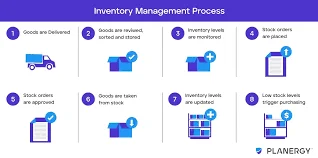Keeping accurate inventory records is essential for businesses to avoid stock discrepancies and ensure smooth operations. Two common methods used to manage inventory are cycle counting and annual inventory. Each approach has its benefits, and the choice depends on the company’s specific needs.
What Is Cycle Counting?
Cycle counting involves checking a small portion of inventory on a regular basis, such as daily, weekly, or monthly. This method ensures continuous accuracy and minimizes disruptions to business operations. It is especially useful for businesses with high inventory turnover, such as retail stores or e-commerce platforms.
What Is Annual Inventory?
Annual inventory is a full stock count conducted once a year, typically at the end of the financial year. This method provides a complete overview of the company’s inventory but requires more time and resources. Many businesses shut down operations temporarily during the count to avoid discrepancies.
Pros and Cons of Each Method
- Cycle Counting:
- Pros: Continuous accuracy, fewer disruptions, and quicker issue resolution.
- Cons: Requires trained staff and may not cover all inventory at once.
- Annual Inventory:
- Pros: Provides a complete picture of stock levels.
- Cons: Time-consuming, costly, and may require a temporary halt in operations.
Which Method Should You Choose?
Cycle counting is ideal for businesses that need ongoing accuracy and cannot afford to shut down operations. On the other hand, annual inventory works well for companies with low stock movement or those that prefer a full overview at the end of the year.
Both methods are important for maintaining accurate records and ensuring smooth operations. The choice between them depends on the size, nature, and needs of the business.























